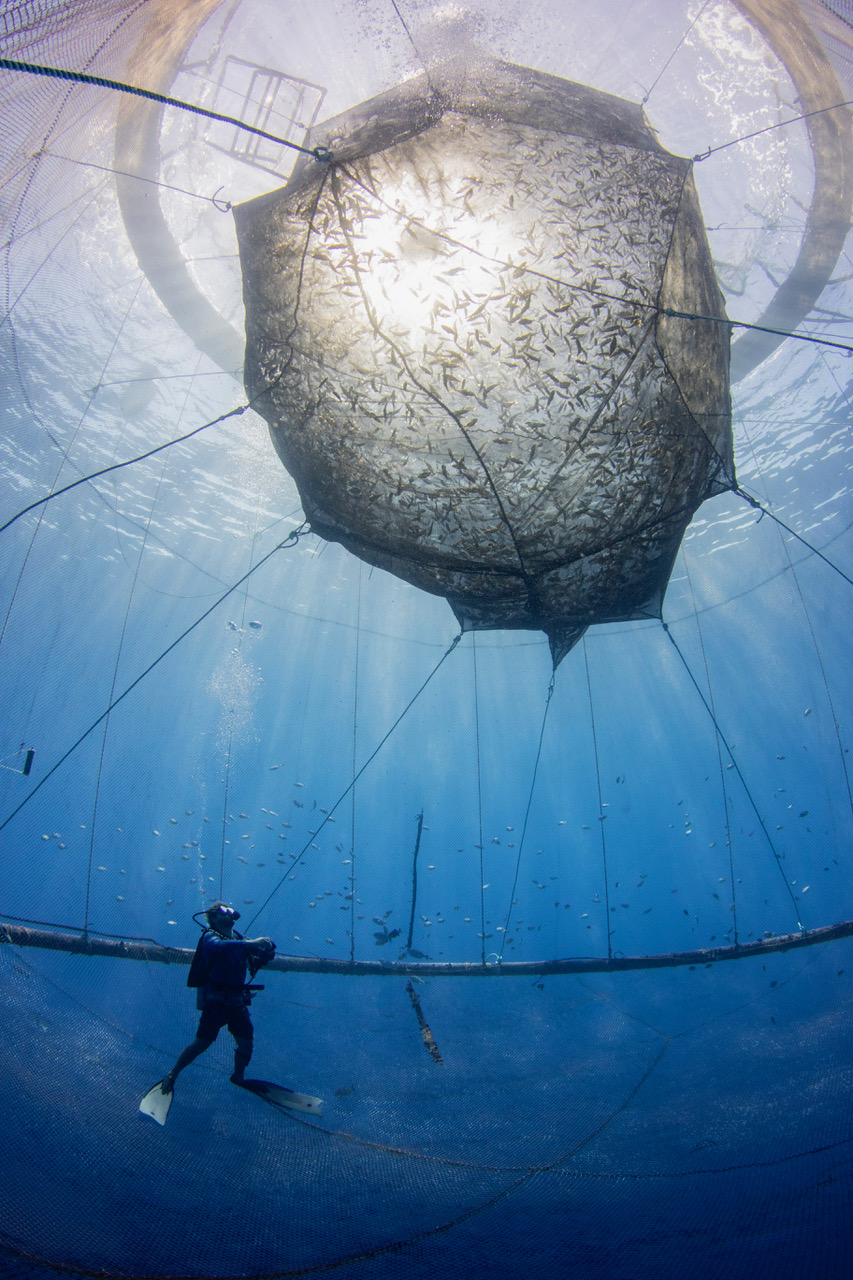
Finfish aquaculture off the coast of Kona, Hawai'i Island. Credit: Jeffrey Milisen.
NCCOS has released two atlases that compile the best available science to inform the identification of Aquaculture Opportunity Areas (AOAs) in the Gulf of Mexico and the Southern California Bight. NOAA previously identified these regions for their potential to host sustainable commercial aquaculture development in the United States. Areas in the atlases have characteristics expected to support multiple types of aquaculture industries including finfish, shellfish, seaweed, or some combination of these farming types.
The atlases provide the most comprehensive marine spatial analyses ever developed for any U.S. ocean space. NCCOS developed each atlas using more than 200 data layers accounting for key environmental, economic, social, and cultural considerations, including fishing interests and marine protected areas. The studies identified nine areas in the Gulf of Mexico and 10 areas in the Southern California Bight that have the highest potential to support three to five marine aquaculture operations, while also reducing conflicts with other ocean uses.
The atlases do not identify AOAs, but are instead an important step to provide peer-reviewed spatial mapping that will inform the selection process for final aquaculture opportunity selections. The decision to identify an AOA will only be made after completion of the National Environmental Policy Act Programmatic Environmental Impact Statement, which will assess the impacts of siting aquaculture facilities in different potential locations. Proposed aquaculture development must go through the appropriate permitting process.
Though the information delivered in these atlases is tailored to inform the AOA selection process, the method used to conduct these analyses could also benefit other ocean planning and coastal management.
NOAA will continue to work with Fishery Management Councils, Marine Fisheries Commissions, states and tribes, and other stakeholders to identify areas to be considered in further depth for sustainable aquaculture. Public input is vital to shaping an open and transparent AOA process.
 Official websites use .gov
A .gov website belongs to an official government organization in the United States.
Official websites use .gov
A .gov website belongs to an official government organization in the United States. Secure .gov websites use HTTPS
A lock or https:// means you’ve safely connected to the .gov website. Share sensitive information only on official, secure websites.
Secure .gov websites use HTTPS
A lock or https:// means you’ve safely connected to the .gov website. Share sensitive information only on official, secure websites.